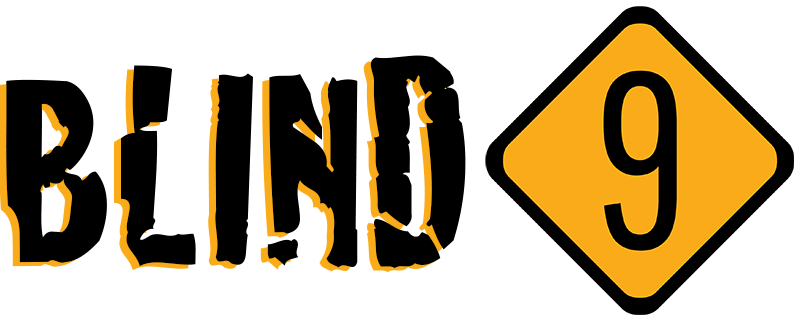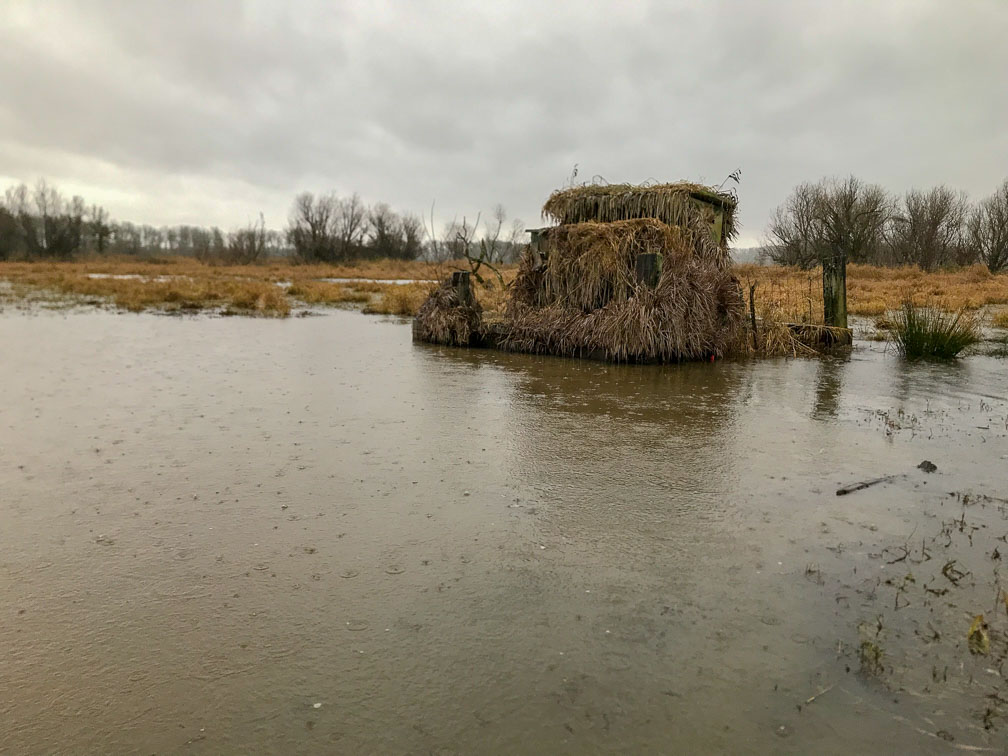On this mid-December hunt I got a chance to revisit the literal namesake of this website, Blind 9, at the Ridgefield National Wildlife Refuge. We had one of the more memorable hunts of the season in a blind that surprised me because it had been extensively remodeled.
Tim had pick #3 this hunt so we knew we would get a good crack at a top blind. The Southeast wind direction meant we wanted to choose a blind that was not facing into the wind. Blind 9 faces east-northeast, so the wind would be about 45 degrees from behind us. Also, Blind 9 had been a hot blind the preceding week. The first group to pick chose blind 15 (a goose blind) and the second pick did not show, so we got the pick of the rest of the duck blinds. Ironically, I think the best performing blind of the day was Blind 19, which faces into the wind but is on the southern end of the refuge. It probably got first crack at the ducks being blown into the area.
Conditions
It was a nearly ideal day for a hunt in the Pacific Northwest, with a 10 mph Southeast wind with gusts up to 20 mph, and rain showers following a midday front. Temperatures were in the low 40s. I love windy-day duck hunts and this was no exception. The wind gives duck hunters a huge advantage.
Decoy Set-up
Because the wind was blowing right to left, we set up the decoys in a crescent shape with on end of the crescent close to the blind on the right side, which allowed the crescent to follow the shore, leaving the open part of the crescent as a landing zone. The far tip of the crescent we anchored with a pair of goose floaters about 40 yards from the blind.
After about 45 minutes we realized that wary ducks flared out of shooting range instead of continuing to fly into the wind over the decoys. So we moved the decoys closest to us to allow a 10-yard gap between the decoys and the blind, giving the ducks a natural bail-out that was much closer to the blind. This worked like a charm and if the ducks did not commit to land we got some close and easy passing shots.
How We Did
Tim and I bagged 11 birds on this hunt. I joked that we intended to take only spoonies on this hunt and failed twice, as we had 9 northern shovelers, a gadwall drake, and a widgeon drake. In an interesting turn of events, we downed the majority of the birds after noon. A rain front started to blow into the area right about noon and with it came sporadic flocks of shovelers, gadwall, and ringnecks. As always around here, the birds tend to sit in the rain and move around between squalls, making for consistent and predictable hunting.
The Bottom Line
The wind was our friend, leading to a predictable set-up and easy shots. Blind 9 is now among our favorites.



2 Comments. Leave new
Does it still require the boat to access?
When we hunted it in early December the water was belt level in the hole in front of the blind. I’m 5’9″ so if water levels increase I could see shorter guys struggling at times. The boat is in 13 right now and a friend who hunted that blind in early December said it wasn’t needed, but made hauling gear across the water a lot easier.